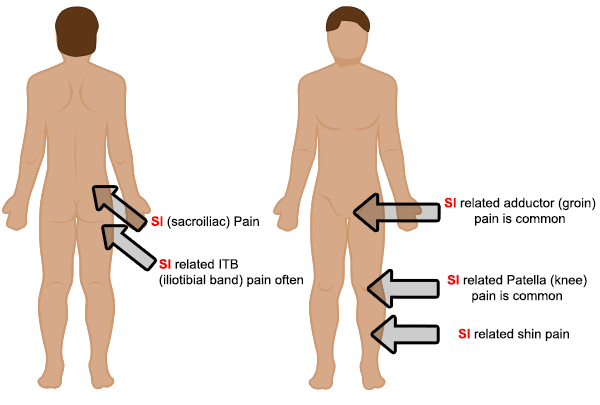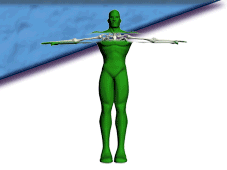SI Sprain - Areas of Pain Referral
To help the chronic or recurring sacroiliac sprain, which the patient may describe as one-sided low back pain or hip pain, we must first understand how the SI joint works. Each of us has two sacroiliac joints, right and left. Each side of the pelvis, right and left, connects with the sacrum in the middle. This is the bone that ends in your tailbone. The right pelvic bone (os coxa) connects with the right side of the sacrum and the left pelvic bone connects with the left side of the sacrum.
The traditional surgical model for correction of this joint when it is irreversibly sprained, loose, and unstable, aims at surgically "fixing" the joint through some type of bony fusion. This seemed logical in the middle of the 1900s. But surgical outcomes were notoriously bad and tragic, so the practice was all but abandoned as the century progressed. These outcomes were bad because the joint is SUPPOSED TO MOVE, albeit in a specific way. Fixing it predisposes the patient to harmful and unnatural stresses on adjacent joints including the lowest lumbar disc and joints.
The movement that is normal for the SI joint is subtle and rhythmic. It is so unique to the sacroiliac joint that it has its' own name, NUTATION. This has been referred to as "joint breathing".

The therapies that make sense for this condition are those that aim to repair the torn and over-stretched connective tissue on the painful sprained side, and those that aim to introduce forgotten and normal movement to the fixated side. The repair treatment for the chronically sprained SI joint is the practice known as Prolotherapy. The mobilization treatments for the fixed side are the business of Chiropractic, Naprapathy, and exercise rehabilitation. If this problem is very chronic and persistent all these treatments should be employed.
Click here for more from Dr. Young on SI Sprains
Return to the Articles Page
Return to the Where's Your Pain? Page



